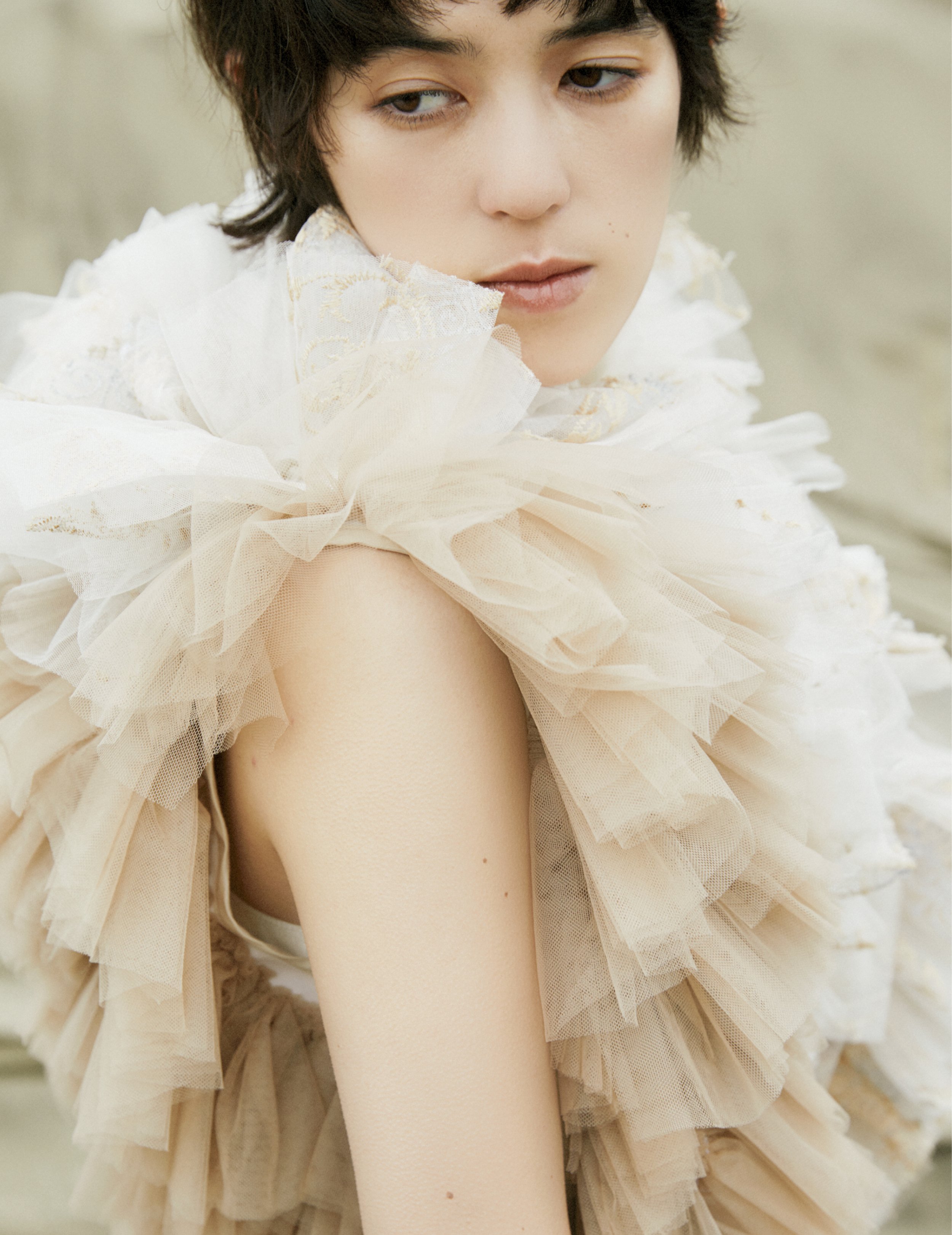Yuta Setogawa
originally published in volume 12
Photography_ Kazuma Hata
Stylist_ Kazuki Abe
Hair_ Yui Suzuki
Make-Up_ Maila Tsuboi
Model_ Sakura Maya Michiki
Jumpsuit_Max Zara Sterck
a conversation with Yuta Setogawa
Portrait_ James Oliver
Writer_ Mari Kishi
Having been absolutely fascinated by the work of Yuta Setogawa as a student - being able to take discarded and unused materials to come up with some bold and illuminating designs - we knew he was a designer with great potential. On the eve of the YUTASETOGAWA debut wearable collection's launch, we sat down with Setogawa to pick his brain about his approach and what has gone into launching his own label.
With this being your debut season as a wearable collection, can you tell us how many designs or items you have for Spring/Summer 2021?
For the first time, I have been able to come up with 40 pieces for the line.
You decided to self-name your label YUTASETOGAWA; what is the mindset behind this? Is there any particular reason why you decided to take this route, and how does it represent you and the label?
I'm trying to create a collection that reflects my own personal emotions. I will continue to make collections with a strong sense of authorship under the name YUTASETOGAWA.
Up until now, you designed clothing using old pieces and scrap materials from the production of your collections; can you talk about this and how important it is to your design ethos?
When I was a student, I did a lot of research into the process of haute couture and when I realised the amount of fabric being discarded, it really disgusted me. For a while, it actually made me consider quitting fashion design altogether, even though every era needs fashion. I thought that there must be something I could do so this was the catalyst for using recycled fabrics and unused materials to design clothing with. Additionally, I was also influenced by Martin Margiela's archives, as well as up-cycling values, which are also key concepts for his design approach.
Is there a particular ethos that symbolises YUTASETOGAWA?
My designs are inspired by people who love themselves for who they are, so my emotional clothes are said to be symbolic.
What do you consider to be the most important aspect of your work?
I'm very meticulous about the creating draping as well as the materials, but whatever I do, I try to keep a fresh and open mindset. It's also important to be emotional.
What is your process of designing and making clothes?
I try to express my feelings about society and the emotions that I feel in life; there is always a message in it. We share these messages with the team and start researching the visuals and the shapes. From there, we start to cut down on the design, if anything. Then we try to find the last possible line of clothing.
The conceptual design elements of the clothing you make are, of course, very important, but I wanted to ask you about the functional design in your work and how you approach this aspect. How much do you consider the ratio?
For dresses and other certain items that are more about the aesthetics of the garment than the functionality, the ratio there can be 70/30, but we don't think that the ratio should be less than 50/50. We believe that the functional design should never be less than 50/50, because we feel that in order for people to be interested and to wear something, we need to have a conceptional design element there as well as it being functional.
Do you have a concept for your brand? Do you have a specific concept for each season?
'We can make our beautiful world for tomorrow' is the concept or the attitude of the brand. The theme of the season changes, but the underlying concept and approach remains the same.
Do you have any outside influences when you make your clothes? Do you find inspiration from outside of fashion?
Fashion is closely linked to society, so as much as possible, we take inspiration from everyday life and take this into account when developing clothing. It can range from a city dump to a work of art, or anything you can think of.
Did you draw the logo for the YUTASETOGAWA brand yourself?
Yes, I designed it for my graduation collection. It's purely my own handwriting, and I like it a lot.
At the moment, your collection is only available in Japan; is it your vision to expand abroad?
Of course, this is a huge motivation for me, and we are constantly thinking about it. Whenever I have the chance, I want to make it a reality. Especially since I had the opportunity to collaborate with Kansai Yamamoto when I was a student. He taught me a lot and he was a huge influence on me and my design approach. London was the starting point for Yamamoto overseas, so I would love to take the same path.
I think there are many different ways of selling nowadays; do you think about having your own shop in the future?
I think that building new sales methods is the most important point for young designers going forward. To replace physical impressions with digital ones, to replace digital convenience with physical ones. That's the kind of shop I want to create.
Can you talk about your own personal style? Being a womenswear designer, it is interesting to know how you dress?
About 80% of the year I wear wide trousers, high socks and leather shoes; a style that hasn't changed since I was about 18. I also like to wear black, which is almost never available in my collections.
What is the vision for YUTASETOGAWA going forward? How do you plan to do it?
YUTASETOGAWA wants to present itself outside of the existing rails that we present in SS and AW. Global yet private is ideal. We are currently in the process of setting up a new brand with a design team, of which I will be the creative director, in order to take YUTASETOGAWA to a more private position, but also to develop a design approach that cannot currently be expressed by YUTASETOGAWA. It will consist of modern, but also wearable items.



















